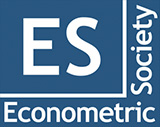2024 Latin American Meeting, Montevideo, Uruguay: November, 2024
Two to Tango: A Private-Public Approach to Productivity
Aldo Mussachio and José Carlos Rodríguez Pueblita
This paper offers an alternative explanation for regional productivity differences and the lack of convergence across regions, integrating concepts from managerial economics, development economics and political economy. It goes beyond traditional factors like physical capital, labor, and human capital. Utilizing data from a survey of 28,709 Mexican firms and governance and administrative data from 2,458 local governments, the study applies Bloom et al.’s (2017) concept of management as technology. It presents an empirical model linking firm productivity to internal and external factors, including firm and government management practices, measured using the World Management Survey (WMS) scoring grid, and argue that the government management score indicates the quality of public goods. Findings show that both firm and government management practices significantly impact productivity, measured as total factor productivity (TFP) and value added per worker. For example, one standard deviation increase in a firm’s management score results in a 0.4%-0.6% in TFP or 7.4%-8.1% in value-added per worker. Similarly, one standard deviation increase in the government’s management score leads to an increase in 1.2%-1.4% in TFP or 27.1%-37.1% in value-added per worker. The study addresses potential endogeneity between firms' internal management practices and quality of public goods, considering network or spillover effects intrinsic to technology, finding a strong positive connection between private management practices and public goods quality. The estimation strategy uses exogenous variation in state capacities using geo-distances from royal treasuries in the Viceroyalty of the New Spain (XVI-XIX centuries), where highly talented bureaucracy was nurtured to maximize tax revenues, and developed managerial capacities to optimize tax collection within their respective area of influence. Using data from Colegio de Mexico on distance to Royal Treasuries as instruments to current state capacity we find that closeness to royal treasuries during the Spanish colony explains government practices today measured by the government management scores.
Preview

























